
views
Determining Your Technical Needs
Determine what your website (or website idea) needs to function. Before you start looking at hosting plans, you'll need a good idea of your basic needs. Use this list of questions as a guide for determining the type of service that will best suit your website: Do you have, need, or want your own domain name? Do you have (or want) a blog? Do you need a specific blogging platform (e.g., Wordpress)? Are you tech-savvy or a beginner? If you're not a developer, you might consider a host like Squarespace, Wix, or Weebly. These hosts make it easy to create a stylish personal or professional site without any technical know-how. Do you really need a paid webhost or could you get by with a free option? If you plan to have a personal blog without your own domain name, consider free options like Tumblr, Blogger, or Wordpress.com. Do you rely on (or want) a visual panel like cPanel to install software and updates? Do you need to migrate an existing website to a new host? If so, does your site require specific tools (a certain blogging platform, support for certain types of apps, etc.) to run? Do you need to be able to sell products or services and take payments?

Consider size and potential growth. Web hosts often charge different rates depending on how much traffic your site gets and how much space your content takes up. Is your business expanding? Do you foresee a significant increase in visitors? There's a chance that what works for you now will need to be scaled up in the near future. When choosing a web host, keep the future in mind and plan accordingly. If you have access to your current website's statistics, use that information to gauge growth.

Learn the difference between different types of web hosting. There are three general types of plans offered by web hosts: Shared hosting: Shared hosting is great for personal websites, bloggers whose sites are mostly text-based, and small businesses who use external ecommerce sites like Shopify or Etsy to handle their sales. Your website will be hosted on a server that also hosts other peoples' websites, which means you'll be sharing resources, such as bandwidth, hard-drive space, CPU power, and RAM. As the most affordable and user-friendly type of web hosting, shared hosting plans typically offer website-building tools, one-click management panels, and limited support. Many shared plans also come with a free domain name. Bandwidth and hard drive space are limited. If a shared server becomes overcrowded or hosts resource-intensive websites, your site's performance may suffer. Dedicated hosting: Dedicated hosting is ideal for large businesses with server administrators, as well as high-traffic/resource-intensive websites with lots of customization needs. With this type of hosting, you'll have an entire server dedicated to your website. You'll control every aspect of your website, including maintaining all applications and databases relied on by your website. You'll also be responsible for ensuring that your server is secure, patched, and up-to-date. If you don't have a server admin and aren't technical yourself, you'll need a "managed" service plan, which can be pricey. Virtual Private Servers: This plan is recommended for businesses whose sites rely on more customization than what's available on a shared server, but don't require as much bandwidth or storage space as what comes with a dedicated server. VPS service is similar to dedicated hosting in that you'll have your own operating system and the ability to manage all aspects of your server's backend tools. It's also similar to a shared server because you'll be sharing the physical hardware with other customers. Like a dedicated server, you'll need advanced technical know-how (or a managed support plan) to build and maintain your site.
Comparing Service Features
Find out which tools are provided. Ensure that the web host you choose has the services necessary for running your website, such as cPanel, WordPress or other blog integration, FTP access, analytics, email support, and a variety of other back-end tools. Some services allow you to choose an operating system (usually Linux or Windows). The industry standard is Linux, but if your site uses custom tools written with Microsoft .NET, you'll want to choose Windows. Make sure the service offers acceptable security tools. Security is especially important if your site is commerce-related or collects user data.
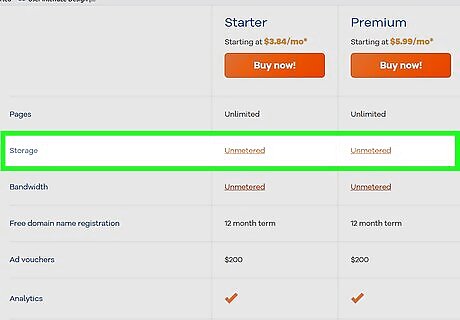
Check the amount of storage offered. Storage is the amount of hard-drive space allotted for your web-pages, images, videos, databases, and other data. Many plans offer claims of unlimited space, but this is usually not necessary for simple websites. In fact, this claim should be a red flag—unlimited space is a technical impossibility. The host's servers could be overcrowded, thus decreasing server performance. Make sure that you have room to expand and grow. Examine the different storage upgrade options—some companies offer more space as your needs expand.
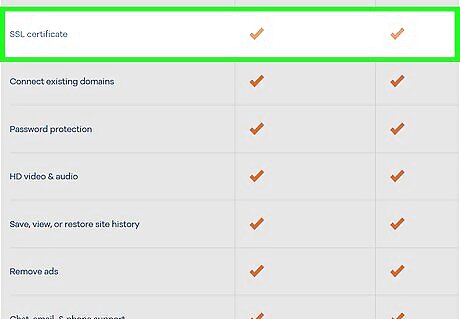
Compare bandwidth amounts between hosts. Bandwidth is the amount of data allowed to transfer between your site and your visitors. Some services offer unlimited bandwidth, while others implement limits. The amount of bandwidth you use will be determined by the amount of traffic you receive as well as the amount and size of content you host. A heavily-visited site with lots of pictures will take a lot more bandwidth than a heavily-visited site with mostly text. "Unlimited bandwidth" is rarely unlimited, and the trade-offs for services like these are often very noticeable. These hosts will typically be much slower than a host that applies bandwidth limits. Make sure you know what happens if you go over your bandwidth allotment. Depending on the company, you may be charged a fee, or your site may be taken offline until the next billing period.
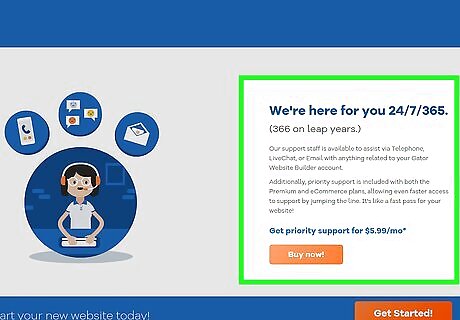
Check out the technical support options. If you don't have your own admin team, you'll want to make sure someone's available if something goes awry. Do you need support to be available 24/7? Is email and chat support acceptable, or will you need to be able to talk to someone on the phone? Do you have to pay extra for support or is it included in the plan? Some hosts don't provide any support (just a support forum for users to help one-another). These services tend to be cheaper, but may be frustrating if you're not tech-savvy.
Researching a Service's Claims and Reputation
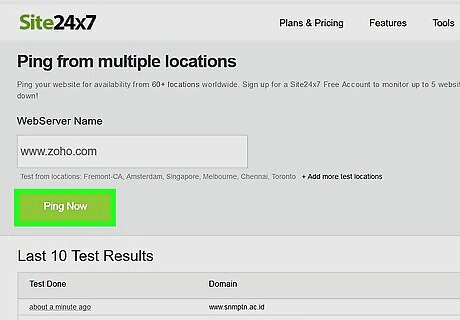
Test the speed of other sites hosted by a service. The time it takes for your website to respond can make or break your business. Many hosts display some of their more popular customer's websites as a means of advertisement. Use these addresses to test the speed, but also know that this is not completely indicative of the speed your site will have. If you're having trouble finding sites hosted by the service, don't be afraid to call, text, or email support to ask for examples.
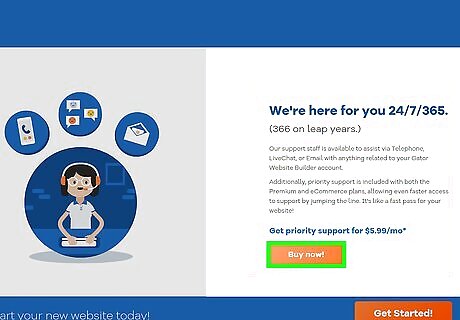
Check out the service's uptime claims. The "uptime" percentage is the amount of time your site is expected to be available on the internet. This is especially important for business websites—customers expect your site to be available 24/7. Many hosts claim 99% update or more, but be wary of any host that claims 100% uptime.
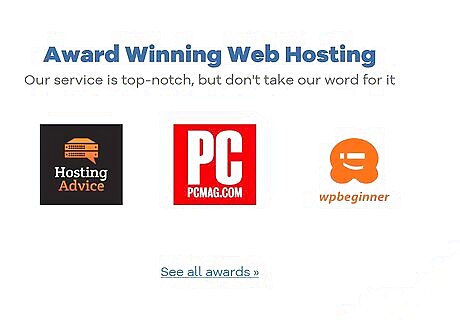
Read reviews of a company's customer service and support team. Search the web for recent, unbiased reviews to make sure the service is consistent. Be cautious when seeking reviews, as some of the top search results (usually with names like "Top Webhosts" or "Best Web Hosting Sites Ranked 2019") are operated by the hosting companies themselves (or by people wanting to make a buck off of referrals). If you're having trouble determining a hosting company's reputation, ask around. You can even make your own post on a forum like Reddit's webhosting forum, asking for reviews and recommendations.
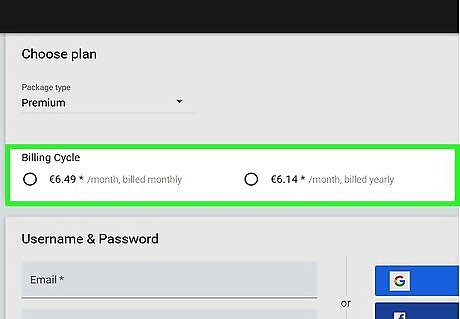
Make sure you understand the costs. Once you've found a plan that meets all of your needs, make sure you fully understand the cost, payment options, and caveats: Most services advertise two different rates (monthly and yearly) per plan. The yearly rate is often displayed as a cheaper per-month amount, but you'll have to pay for a year up front. If you choose to pay for a year in advance, make sure the service offers a pro-rated refund should the service not meet your needs. Many services offer a low promotional rate when you first sign up—these rates may double or triple after you're a customer for a certain amount of time. Find out how long the rate you agree to remains available, and what the rate will be after the promotion ends Web hosts may bundle all kinds of services and products within expensive packages. Make sure you don't sign up for more than what you need. Some services offer free hosting with very limited services. For example, you'll usually not be able to use your own domain name on a free site. Free sites also tend to display advertisements (and interfere with your ability to set up ads for yourself).




















Comments
0 comment